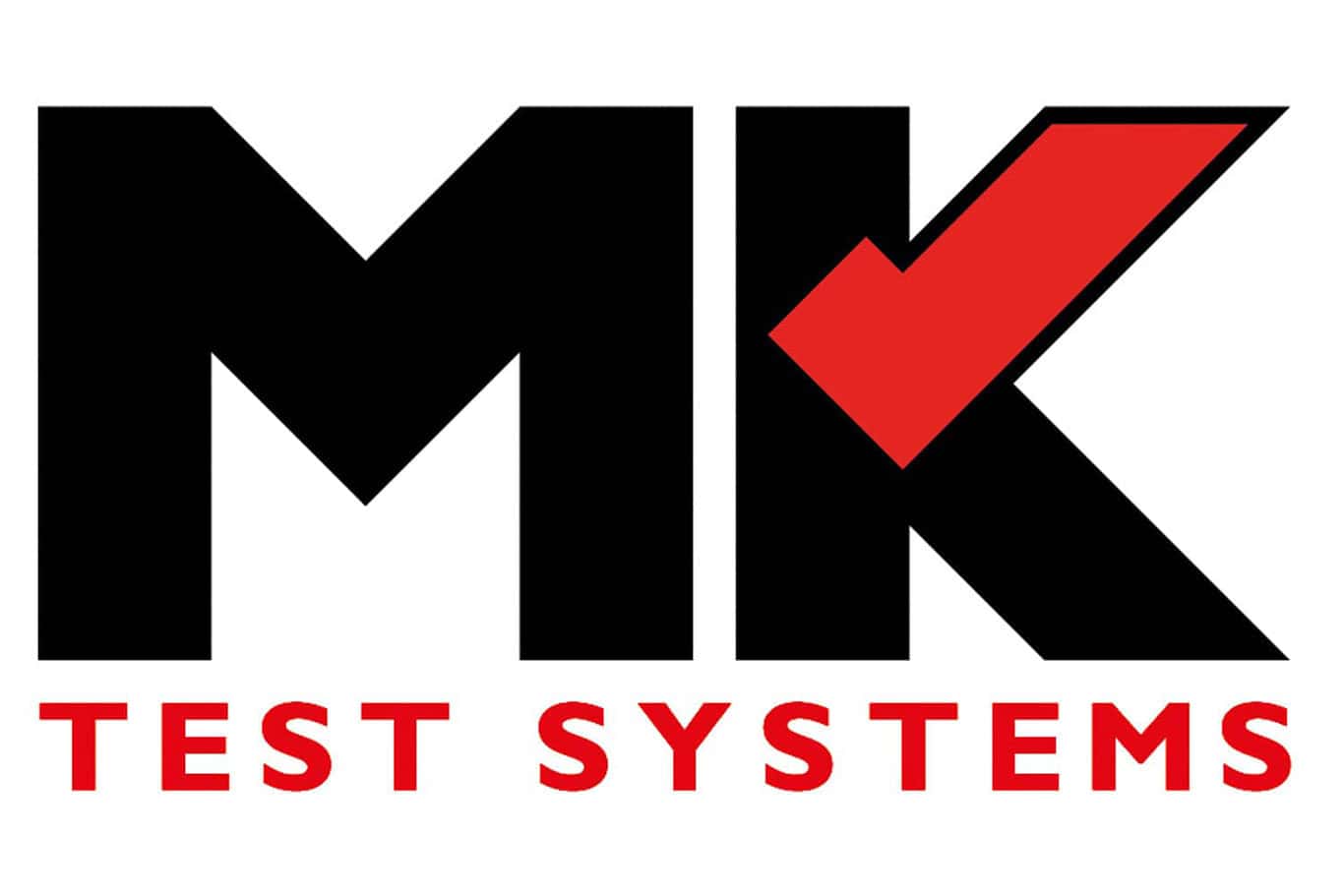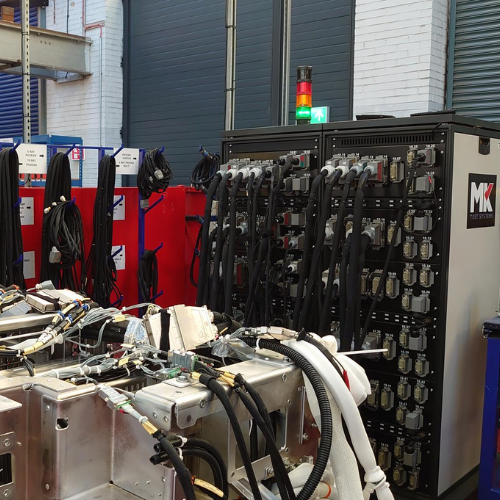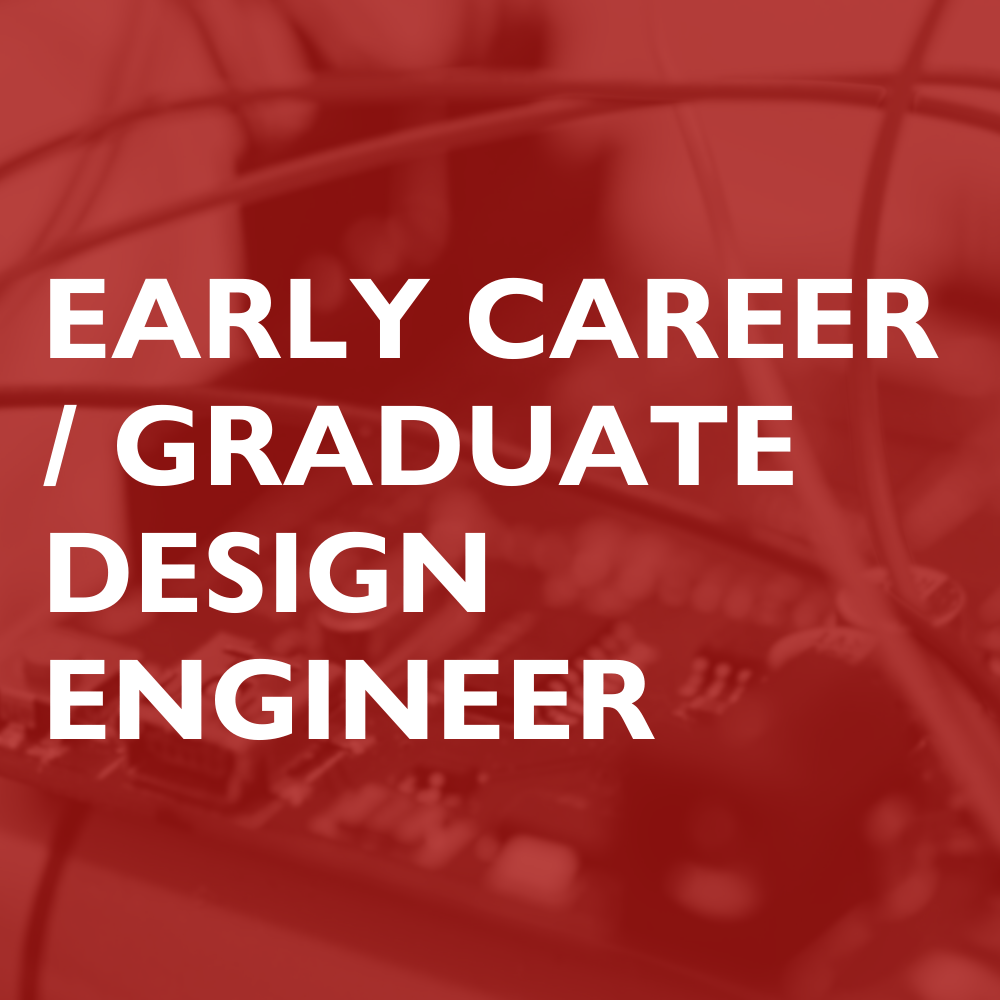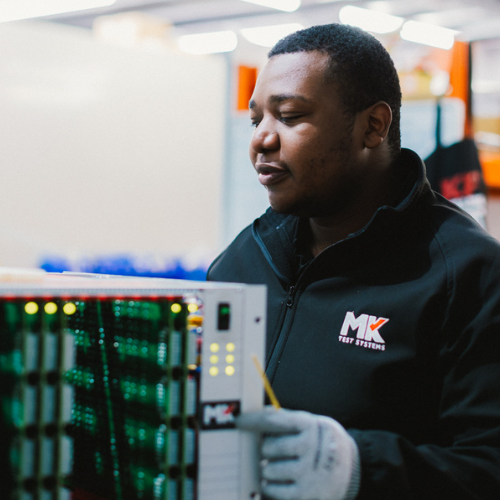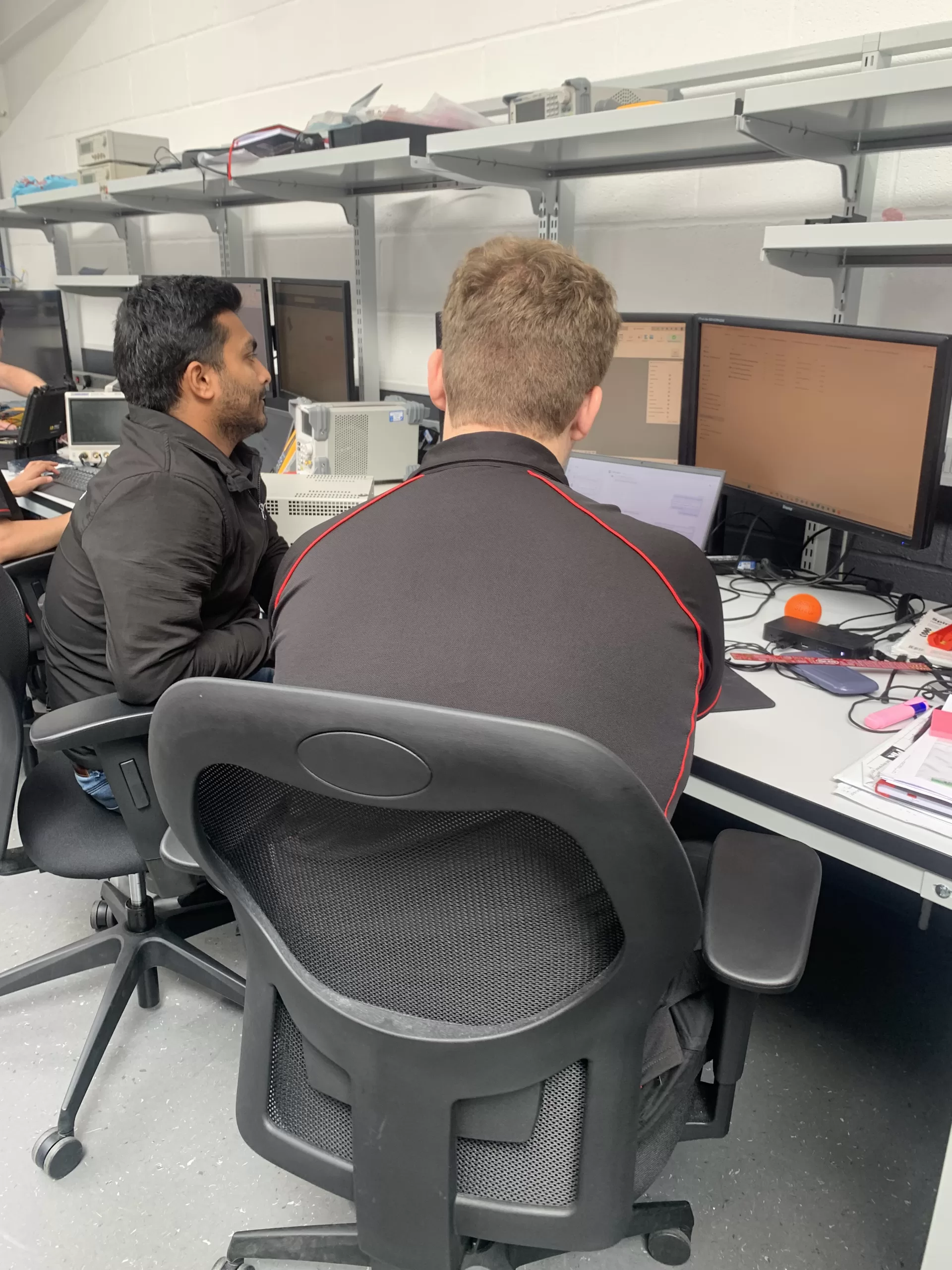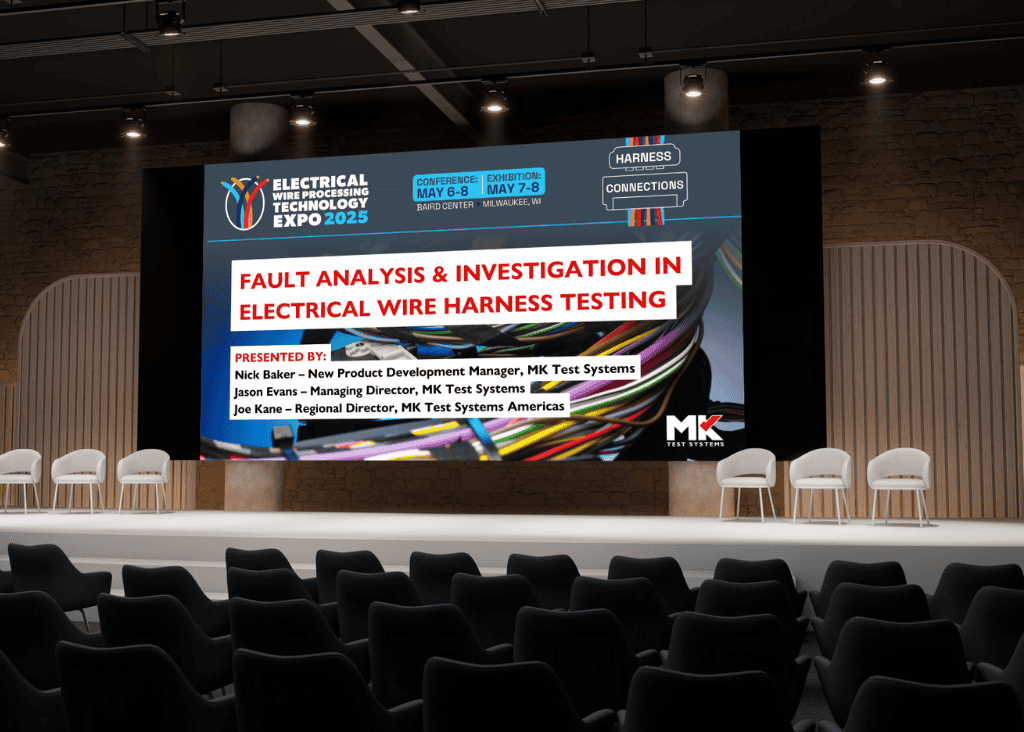At MK Test Systems, we’ve seen how easily rail harness testing can become a bottleneck in large rolling-stock projects. The main reason? When it comes to wiring for rail vehicles, scale is everything. A single train set can contain hundreds of connectors and kilometres of cable, linking everything from passenger information systems to safety-critical control circuits.
In fact, cable manufacturer Nexans notes that a modern train carriage typically contains around one kilometre of cable per metre of its length; meaning a full-length high-speed train set can easily include hundreds of kilometres of onboard wiring.
That sheer scale introduces unique challenges: how do you keep harness testing accurate, repeatable, and fast enough to fit within tight production schedules?
This article will give you a some top best practices that help maintain quality and avoid delays when working with long rail harnesses – backed by case studies and examples from some of our real rail projects.
1. Use automated test equipment for repeatability and speed
Manual continuity checks may work for short looms, but on large multi-conductor rail harnesses, automation makes all the difference.
For example, in a project for CRRC Corporation, MK Test supplied an automated harness test system capable of handling thousands of test points for high-voltage, high-current and multi-bus applications. The system significantly reduced manual intervention and improved harness verification speed. Read the CRRC case study here.
Automated systems such as Automeg deliver rapid, repeatable results; performing continuity and loop-resistance checks across hundreds of individual conductors in moments. That consistency ensures every connection meets specification, without slowing production.
2. Plan test points and access early in the design
When harnesses stretch across an entire train car – or even between cars – it pays to design in test access from the start. Identify logical break points or sub-assemblies where intermediate testing can take place.
Motherson’s site in Derby, UK, integrated an Automeg-based system allowing multiple sub-assemblies to be tested on one bench. The result: faster setup, reduced downtime, and fewer retests during final assembly. Read the Motherson case study here.
3. Manage loop resistance and continuity over long cable runs
As harness lengths increase, so does total loop resistance…and the potential for subtle continuity issues. Setting appropriate resistance thresholds (accounting for cable length, gauge, and temperature) prevents false failures while maintaining confidence in test results.
Automated systems can compensate for expected resistance based on cable parameters, keeping results accurate and traceable. The CRRC project again shows this in action, managing complex multi-bus testing across thousands of conductors.
4. Capture full traceability and data logging
Rail programmes demand complete traceability. Every test result must be logged, reportable, and easily retrievable. Ideally, test systems should automatically store results and generate reports in consistent digital formats.
In the Motherson project, for example, the Automeg system replaced manual printouts with automatic electronic test reports; improving quality control and audit readiness.
5. Align rail harness testing throughput with production flow
Testing shouldn’t hold up manufacturing. High-throughput equipment ensures the test process keeps pace with the harness build and installation.
Although we can’t name the customer, in this Industry Spotlight document we describe how a leading European train OEM has achieved test phase time reductions of over 50%, while boosting test coverage to more than 95% of the train’s electrical systems. The system also reduced the time required for test-program creation and diagnostics via automation.
6. Standardise test systems to reduce setup time
Using a standardised test system design helps reduce setup time and ensures consistency across vehicle variants. Configurable switching boxes and shared test programmes mean operators can move quickly between car types without the need for custom reconfiguration.
This approach was demonstrated in the Automeg M2500 rail harness testing system case study, where a rail manufacturer implemented a flexible test system incorporating a switching box capable of supporting multiple car types with minimal changeover. The result was a significant reduction in setup time and improved repeatability across the production line.
In summary
Long harnesses may be complex, but with the right approach and tools, testing can stay efficient, accurate, and fully aligned with production. Automate where possible, plan test access early, manage resistance carefully, ensure full traceability, and keep testing at production pace.
Our case studies show how MK Test’s Automeg rail harness testing solutions deliver reliable, rapid results across thousands of test point – perfectly suited to the scale of modern rolling-stock manufacturing.
